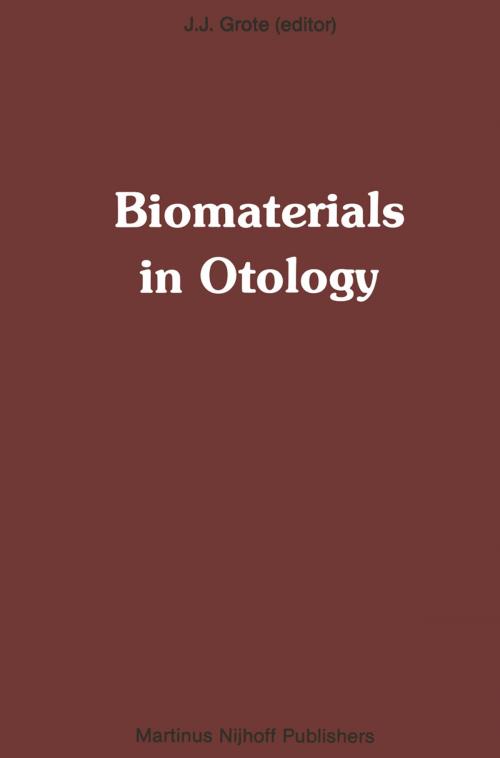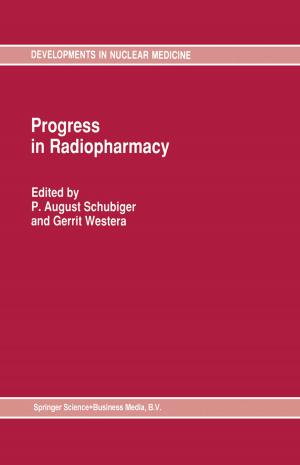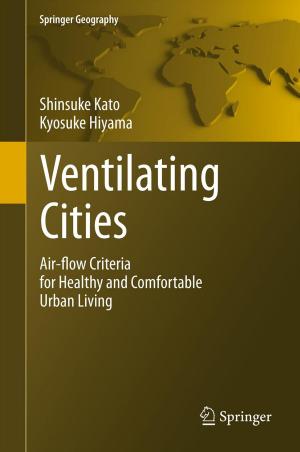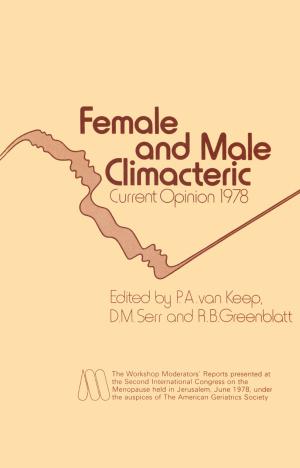Biomaterials in Otology
Proceedings of the First International Symposium ‘Biomaterials in Otology’, April 21–23, 1983, Leiden, The Netherlands
Nonfiction, Health & Well Being, Medical, Specialties, Otorhinolaryngology, Science & Nature, Technology, Material Science| Author: | ISBN: | 9789400967564 | |
| Publisher: | Springer Netherlands | Publication: | December 6, 2012 |
| Imprint: | Springer | Language: | English |
| Author: | |
| ISBN: | 9789400967564 |
| Publisher: | Springer Netherlands |
| Publication: | December 6, 2012 |
| Imprint: | Springer |
| Language: | English |
The need for better implant materials was a stimulus for the increa sing knowledge of Biomaterial Scientists. Different surgical disciplines were very successful in the use of prostheses, especially because they based their surgery on a good cooperation with fundamental scientists. The use of alloplastic implant materials in the reconstruction of the middle ear has not always been successful. We all know the initial suc cess in the sixties and the disappointments after short term follow-up periods. Because of these failures, Otology missed contact with the new developments in Biomaterial Science. However, we must realize that in the reconstruction of a sound conducting system our most successful results are achieved with alloplastic implants. John Shea introduced the use of Teflonprostheses in the restoration of hearing in otosclerosis and ever since this has been the most rewarding reconstructive middle ear opera tion. With the development of the intact canal wall techniques and the use of homologous implant materials the problems of middle ear surgery see med to be solved. However, we now know that closed techniques have dis advantages after longer post-operative periods and the use of homologous implant materials give problems. Collection of these implants is not al ways easy and the preservation is still in discussion. Furthermore, pro blems of resorption, rejection or fixation give uncertain post-operative results. Middle ear prostheses of different new implant materials are promoted by industry and good results are published, but also disappointments after shorter or longer periods.
The need for better implant materials was a stimulus for the increa sing knowledge of Biomaterial Scientists. Different surgical disciplines were very successful in the use of prostheses, especially because they based their surgery on a good cooperation with fundamental scientists. The use of alloplastic implant materials in the reconstruction of the middle ear has not always been successful. We all know the initial suc cess in the sixties and the disappointments after short term follow-up periods. Because of these failures, Otology missed contact with the new developments in Biomaterial Science. However, we must realize that in the reconstruction of a sound conducting system our most successful results are achieved with alloplastic implants. John Shea introduced the use of Teflonprostheses in the restoration of hearing in otosclerosis and ever since this has been the most rewarding reconstructive middle ear opera tion. With the development of the intact canal wall techniques and the use of homologous implant materials the problems of middle ear surgery see med to be solved. However, we now know that closed techniques have dis advantages after longer post-operative periods and the use of homologous implant materials give problems. Collection of these implants is not al ways easy and the preservation is still in discussion. Furthermore, pro blems of resorption, rejection or fixation give uncertain post-operative results. Middle ear prostheses of different new implant materials are promoted by industry and good results are published, but also disappointments after shorter or longer periods.















